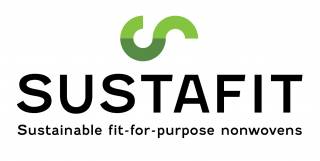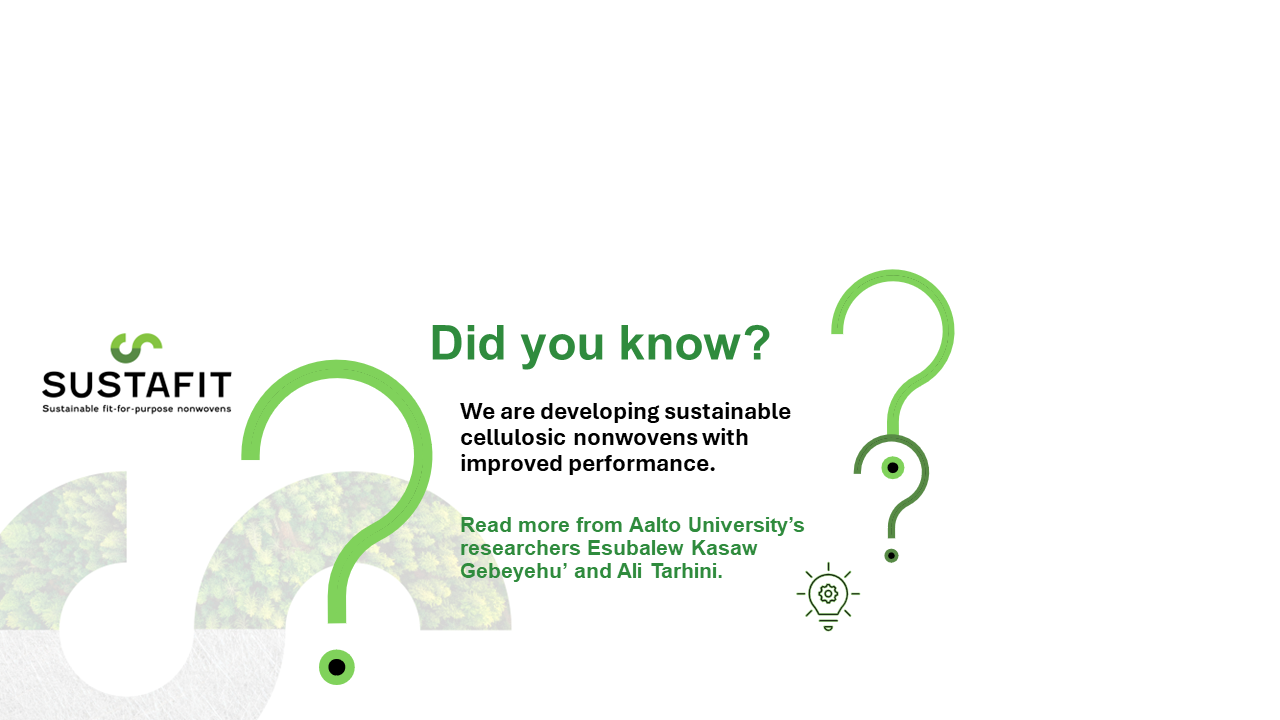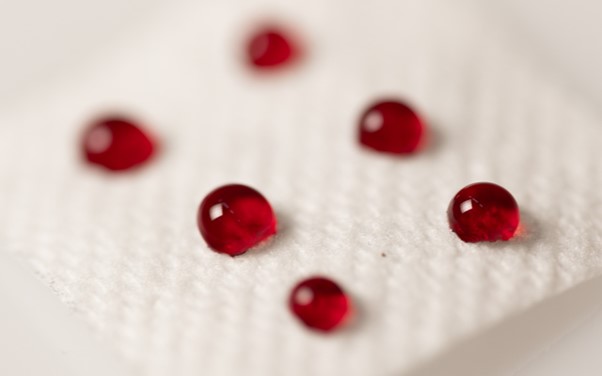In the SUSTAFIT project, we are focusing on enhancing the water-repellency and antimicrobial properties of cellulosic nonwovens with bio-based agents to expand their utility across various fields and provide customers with more effective and environmentally friendly alternatives to synthetic options. We aim to promote the development of more environmentally responsible products while maintaining or enhancing the characteristics of the nonwoven.
To provide some context, let us consider the recent global impact of the 2019-2021 coronavirus pandemic. The surge in demand for single-use face masks led to a significant environmental challenge. Many people discarded their face masks after one use, leading to millions ending up in landfills or being burned. These masks are commonly made from fossil-based synthetic fibers that are not biodegradable.
To adapt biodegradable cellulose nonwovens for applications like face masks, it’s essential to improve their properties through the development of a hydrophobic and antimicrobial layer. The hydrophilic nature of cellulosic nonwovens is due to their porous structure and the presence of excessive hydroxyl groups on the structure of cellulose which makes it absorb and retain moisture and water. In conjunction with its moisture absorbance property, cellulose provides an organic composition that serves as a nutrient source for microorganisms that promotes microbial growth.
However, the increasing demand for cellulosic nonwovens that are hydrophobic and antimicrobial has become significant over the years.
The significance of hydrophobicity in cellulosic nonwovens lies in its ability to have water repellency making the surface resistant to moisture and liquid penetration. Antimicrobial treatments play a vital role in inhibiting the growth of bacteria and other microorganisms allowing users to have a safer environment and keeping the cellulose from microbial degradation.
This characteristic not only improves the durability of the nonwoven fabric but also enhances its versatility, making it well-suited for applications like medical textiles, and face masks. This is particularly critical in healthcare applications, where the presence of such materials can contribute to infection prevention.
Therefore, having hydrophobic and antimicrobial features in cellulosic nonwoven materials aligns with the needs of various industries, providing practical and innovative solutions to meet a diverse range of requirements.
Aalto University is contributing its expertise in producing cellulosic fibers from different raw materials. Our research project addresses the functionalization of cellulosic nonwovens in concrete terms by developing the water-repellency (as shown in the figure) and antimicrobial performance of bio-based cellulosic nonwovens. Among other things, Aalto is investigating ways to increase the functional properties of fibers and nonwovens so they can be used for various applications.
How do we do that?
Using different preparation methods, we are applying bio-based agents that we can extract from nature on cellulosic nonwovens to introduce antimicrobial and hydrophobic properties. From the onset, our commitment has been to identify sustainable, bio-based agents capable of enhancing these functionalities with a lower environmental impact.
We pursued three distinct approaches to enhance functional properties:
(1) the incorporation of antimicrobial agents during the fiber spinning process by adding the finishing agents to the dope solutions, which allows for the integration of these properties at the very foundation of the fiber formation;
(2) adding the agent directly to the slurry during the nonwoven production process, ensuring an even distribution of the antimicrobial and hydrophobic properties throughout the material; and
(3), a post-treatment method, where functional materials are applied to the already produced nonwoven fabric, allowing for additional layers of protection and functionality.
Our research team is actively testing a variety of bio-based agents, such as natural waxes and plant-based extracts, to not only impart antimicrobial properties to cellulose nonwovens but also to refine and optimize these processes for scalability. This approach aims to pave the way to produce nonwoven materials that are both functional and sustainable.
Why is this important?
Bio-based agents are usually derived from renewable resources and are biodegradable.
Utilizing bio-based agents to impart antimicrobial and hydrophobic properties on cellulosic nonwovens not only introduces new functionalities for cellulosic nonwovens and allows users to use these nonwovens in new applications but also maintains their biodegradability, ensuring the environmental integrity of the product.
Using bio-based agents for adding functionality on different substrates does not compromise the biodegradable nature of the materials, ensuring that the enhanced nonwovens can still be disposed of in an environmentally responsible manner. The use of biobased agents not only addresses sustainability and environmental concerns but also aligns with changing consumer preferences, regulatory requirements, and industry trends.
How can companies benefit from this innovation?
The antimicrobial and hydrophobization process for cellulosic nonwoven materials is essential for industry partners because it enhances product performance, ensures regulatory compliance, and meets growing consumer demand for safer and more durable products. It also offers a competitive edge and aligns with sustainability goals, making it a valuable investment for businesses in various industries.
As illustrated in this figure, cellulosic nonwoven is coated with a bio-based substance, displaying its water-repellent properties. The water droplets on the surface are colored for enhanced visibility. This cellulosic nonwoven was produced from bio-based and biodegradable materials, ensuring it returns to nature with minimal environmental impact.
Image by: Pegah Shamloo
Text by: Esubalew Kasaw Gebeyehu (PhD student) and Dr Ali Tarhini (Postdoctoral researcher) in the Textile Chemistry research group at Aalto University




